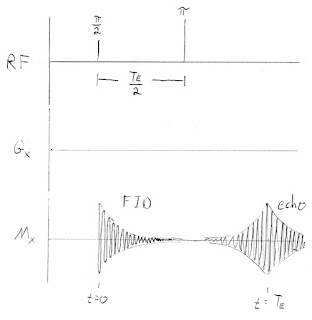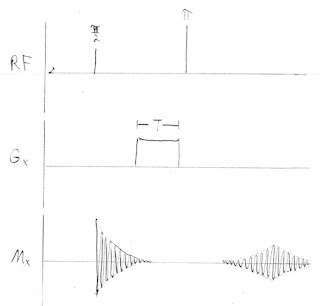 |
| Strange Glow, by Timothy Jorgensen. |
The common denominator of most radiation exposure scenarios is fear. Just mention the word radiation, and you instill fear—a perfectly understandable response given the images of mushroom clouds and cancerous tumors that immediately come to mind. Those images would justifiably cause anyone to be anxious. Nevertheless, some people have also become highly afraid of diagnostic x-rays, luggage scanners, cell phones, and microwave ovens. This extreme level of anxiety is unwarranted, and potentially dangerous.Strange Glow is written for a general audience. Those who have studied from IPMB will already have a stronger quantitative background in math and physics than is needed for Strange Glow’s qualitative discussion. However, as Jorgensen writes in the preface, “These highly quantitative approaches have proved to be largely ineffective in communicating the essence of risk to the public.” I can’t argue with that. I recommend IPMB for a technical background, but Strange Glow for appreciating the broader impact of radiation on society.
When people are fearful, they tend to exaggerate risk. Research has shown that people’s perception of risk is tightly linked to their fear level. They tend to overestimate the risk of hazards that they fear, while underestimating the risk of hazards they identify as being less scary. Often their risk perception has little to do with the facts, and the facts might not even be of interest to them. For example, many Americans are terrified of black widow spiders, which are found throughout the United States. They are uninterested in the reality that fewer than two people die from black widow bites each year, while over 1,000 people suffer serious illness and death annually from mosquito bites. Mosquitoes are just too commonplace to worry about. Likewise, the risk of commercial airplane crashes is tiny compared to motorcycle crashes, but many a biker is afraid to fly.
The point is that risk perception drives our decision making, and these perceptions often do not correspond to the real risk levels, because irrational fear is taking our brains hostage. When irrational fear enters the picture, it is difficult to objectively weigh risks. Ironically, health decisions driven by fear may actually cause us to make choices that increase, rather than decrease, our risks.
Like Gaul, Strange Glow is divided into three parts. Part 1 describes how radiation was discovered, Part 2 discusses the effects of radiation on human health, and Part 3 focuses on risk assessment. I liked the third part best. Jorgensen emphasizes the human stories behind the science. For instance, he begins the chapter about radon by telling the tale of the Watras house.
On December 2, 1984, Stanley J. Watras, an engineer working on construction of the new Limerick nuclear power plant near Portstown, Pennsylvania, arrived at work. The plant, just seven miles from his home in Boyertown, was scheduled to begin generating power within three weeks, and the construction crew had just installed radiation detectors at the plant doors—a standard safeguard to ensure that nuclear workers don’t exit the plant with any radioactive contamination on their bodies. When Watras arrived that day, he set off the alarms on the detectors as he walked into the plant. Over the following two weeks he would set off the alarms every morning. Further investigation revealed that his clothes were contaminated with radioactivity that he had picked up at his home!Jorgensen then describes how the Environmental Protection Agency publicized—and perhaps exaggerated—the risks of radon. But by trying to err on the side of safety, their efforts became a case study in the challenges of risk assessment.
When radiation safety personnel from the plant visited Watras’s home, they discovered what they didn’t think possible. There was more radon gas in the Watras split-level house than was found in a typical uranium mine . . . about 20 times as much! Surprised, the radiation safety technicians checked the radon levels in the neighboring houses. “Our house,” Watras remarked in consternation, “had perhaps the highest contamination level in the world, but our next door neighbors had none.” How could this be?
This is one of the trade-offs of using multiple, highly conservative assumptions in risk assessment. It may seem prudent to inflate the risk in order not to underestimate it. Nevertheless, by adopting high-end estimates for every uncertain risk parameter, the cascade of high-end risk assumptions can compound to the point where the final predicted risk levels become incredulous and may even defy common sense.I find Jorgensen’s evidence-based, unemotional discussion of risk assessment to be a breath of fresh air. Far too often public fears are driven by emotions and ignorance, rather than a balancing of risks and benefits. I highly recommend Strange Glow to anyone wondering or worrying about the danger of radiation. Sometimes the danger is real and sometimes it is not, and you need to know which is which.
Below are some videos about the book and its author. Enjoy!









![Handbook of Mathematical Functions with Formulas, Graphs, and Mathematical Tables [Applied Mathematics Series 55]](https://images-na.ssl-images-amazon.com/images/I/41gJxuCCKuL._SL110_.jpg)








































